It has mostly been a quiet week around here. I’ve been making good progress on my writing (more on that below), and my daughter went back to university today. Isis has also been quiet and laid back, so we were starting to leave her out of her crate when going out for a short time, like to dinner. That worked out fine a few times, until last Sunday night she decided to chew up the AC adapter to the daughter’s Nintendo WiiU system.
We were not amused, and Isis got a good scolding. After that, she went upstairs to pout, as dogs do oh so well:

But within a few days, she’d made up with DD, and even allowed her to use her as a lapdesk while she watched the turtle:

For DD’s last day before going back to school, one of my friends from college and her partner came over for our annual belated Christmas get-together. We always do this a few weeks after Christmas, so we can get each other stuff we didn’t get–great fun! Afterward, we spent a few hours at Carillon Historical Park, which is the place to go for Dayton history and to see what’s so cool about it. They live in Columbus and had never been there, and my husband hadn’t since he was a kid, and everyone had a great time. Then we went to dinner, which also turned out to be something special as it was Restaurant Week, which was a great chance to try something new and tasty at the Hawthorn Grill. Everything was wonderful, and we all went home stuffed (and with several take-home boxes)!
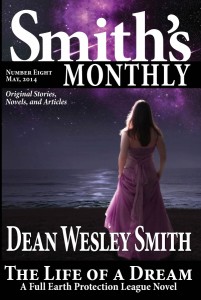 What I read this week: Smith’s Monthly #8, which included the novel Life of a Dream. A really enjoyable issue, especially with the way the same character from the first short story ended up being one of the main characters in the novel, which took place some 15-20 years later. Amazing how a story that takes place in a nursing home can end up so positive and uplifting, and also very entertaining! Parts of the novel also took place there as well, and the same is definitely true for it. What’s interesting is reading it after reading about his process in writing it. This novel actually started out as four connected short stories, and it was obvious when reading it. Not in a bad way, and maybe it wouldn’t have been so much if I hadn’t known that. Just interesting, that’s all.
What I read this week: Smith’s Monthly #8, which included the novel Life of a Dream. A really enjoyable issue, especially with the way the same character from the first short story ended up being one of the main characters in the novel, which took place some 15-20 years later. Amazing how a story that takes place in a nursing home can end up so positive and uplifting, and also very entertaining! Parts of the novel also took place there as well, and the same is definitely true for it. What’s interesting is reading it after reading about his process in writing it. This novel actually started out as four connected short stories, and it was obvious when reading it. Not in a bad way, and maybe it wouldn’t have been so much if I hadn’t known that. Just interesting, that’s all.
 ROW80 Update: My goal last week was to do an overall scene review, then begin the markup for revision. The scene review went quickly, since I did a lot of notes on that after writing each scene, and I also grouped them into chapters. As for the markup, I tend to write fast first drafts (yeah, I know, this one didn’t feel fast, but it was), and jot notes where I need to fill in some research detail or whatnot. There are a lot of these since it’s a time travel, but one where the time travel is between two historical periods, not one contemporary and one (or more) historical, with one main character from each. So I have to make sure both time periods are accurate, and both characters say things appropriate to his/her time period. The good news is I got through 7 chapters, so making good progress there. So this week’s goal is to get the markup done through Chapter 20, or the end of the book (Chapter 25) if I’m extra-productive.
ROW80 Update: My goal last week was to do an overall scene review, then begin the markup for revision. The scene review went quickly, since I did a lot of notes on that after writing each scene, and I also grouped them into chapters. As for the markup, I tend to write fast first drafts (yeah, I know, this one didn’t feel fast, but it was), and jot notes where I need to fill in some research detail or whatnot. There are a lot of these since it’s a time travel, but one where the time travel is between two historical periods, not one contemporary and one (or more) historical, with one main character from each. So I have to make sure both time periods are accurate, and both characters say things appropriate to his/her time period. The good news is I got through 7 chapters, so making good progress there. So this week’s goal is to get the markup done through Chapter 20, or the end of the book (Chapter 25) if I’m extra-productive.
What about you–have you tried anything new or fun lately, whether it’s someplace to go, or something to eat, or something else? Read any good books lately? And how are you doing on whatever goals you might have, whether writing-related or not? Please share–I’d love to hear from you!
 Jennette Marie Powell writes stories about ordinary people in ordinary places, who do extraordinary things and learn that those ordinary places are anything but. In her Saturn Society novels, unwilling time travelers do what they must to make things right... and change more than they expect. You can find her books at Amazon, Barnes & Noble, Smashwords, Kobo, iTunes, and more.
Jennette Marie Powell writes stories about ordinary people in ordinary places, who do extraordinary things and learn that those ordinary places are anything but. In her Saturn Society novels, unwilling time travelers do what they must to make things right... and change more than they expect. You can find her books at Amazon, Barnes & Noble, Smashwords, Kobo, iTunes, and more.


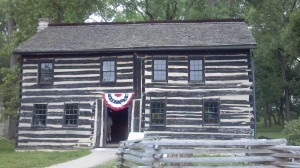


 Even though I’m posting this on Sunday, many people don’t read until Monday, so I figured why not keep up the My Town Monday Fun Fact? Here’s this week’s: Many people think that the only mobile National Historic Landmark is the San Francisco Cable Cars. Not true! There are others, and one of those is right here in Dayton. It’s the Wright Flyer III, the world’s first practical airplane. Built by Wilbur and Orville Wright in 1905, it’s the first Flyer that could turn, make circles, and fly in the more variable winds we have here in Ohio. And even though it’s a National Historic Landmark, and part of the National Park System, you can see it today: it’s housed at Dayton’s Carillon Historical Park, which is operated by
Even though I’m posting this on Sunday, many people don’t read until Monday, so I figured why not keep up the My Town Monday Fun Fact? Here’s this week’s: Many people think that the only mobile National Historic Landmark is the San Francisco Cable Cars. Not true! There are others, and one of those is right here in Dayton. It’s the Wright Flyer III, the world’s first practical airplane. Built by Wilbur and Orville Wright in 1905, it’s the first Flyer that could turn, make circles, and fly in the more variable winds we have here in Ohio. And even though it’s a National Historic Landmark, and part of the National Park System, you can see it today: it’s housed at Dayton’s Carillon Historical Park, which is operated by 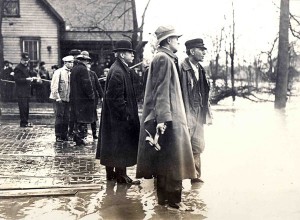
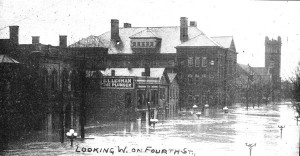
 Did I do this intentionally? Yes and no. It was something I thought about, for my book takes place in Dayton, specifically at Wright-Patterson Air Force Base. And neither would be accurate if it wasn’t racially diverse.
Did I do this intentionally? Yes and no. It was something I thought about, for my book takes place in Dayton, specifically at Wright-Patterson Air Force Base. And neither would be accurate if it wasn’t racially diverse. The solution was perfect, as it fit into the time period. It also emphasized how monumental a thing Tony had done by going into the past. Here’s a brief excerpt:
The solution was perfect, as it fit into the time period. It also emphasized how monumental a thing Tony had done by going into the past. Here’s a brief excerpt: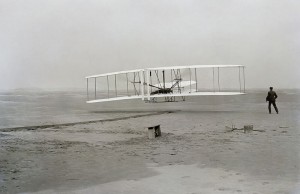
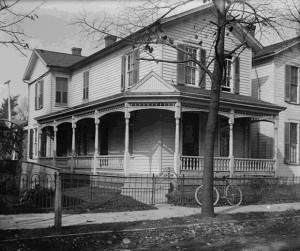
 One of the fun things about writing (and reading) time travel stories is the whole fish-out-of-water aspect, especially when someone goes into the future. There is one scene in
One of the fun things about writing (and reading) time travel stories is the whole fish-out-of-water aspect, especially when someone goes into the future. There is one scene in 
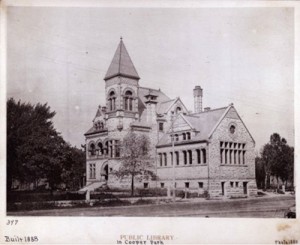 The precursor to
The precursor to 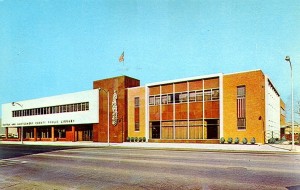 The library is once more outgrowing its downtown location, and
The library is once more outgrowing its downtown location, and